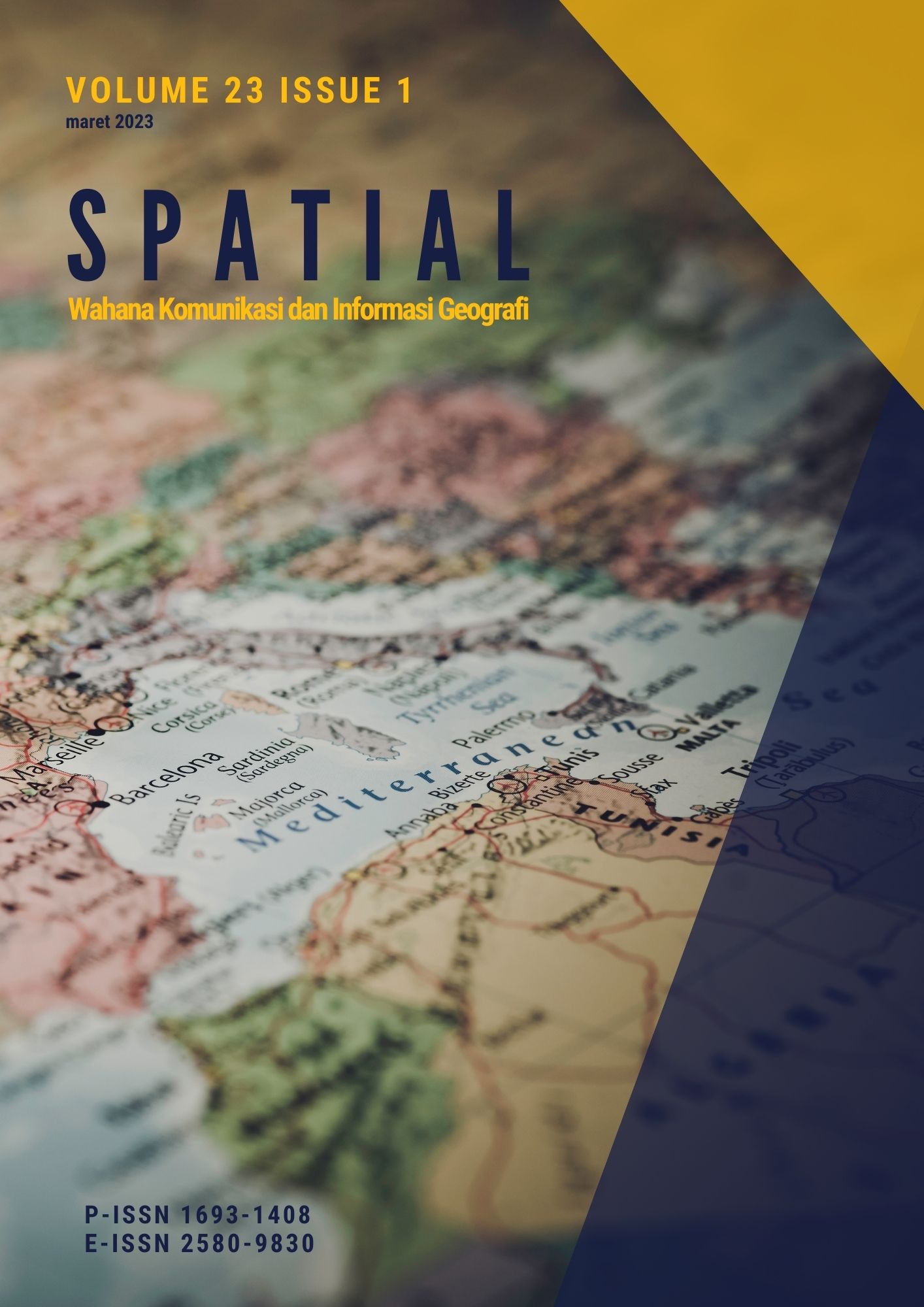Pemetaan Persebaran Penyakit Malaria di Kecamatan Punduh Pidada, Kabupaten Pesawaran, Provinsi Lampung
DOI:
https://doi.org/10.21009/spatial.231.2Keywords:
malaria, land use, mappingAbstract
Malaria transmission in Pesawaran District has decreased for three consecutive years, namely
2018-2020 where it reached an API rate of 0.67 per 1000 population. In 2020 Punduh Pidada District has
28 positive cases of malaria. Factors that influence the number of cases of malaria transmission include
environmental factors such as rainfall, land use, and altitude. The purpose of this study was to determine
the distribution of malaria in terms of transmission factors in the form of environmental factors in the
form of land use and topography. The method used in this research is qualitative with descriptive analysis.
Data analysis techniques in this study are buffering techniques and map analysis. The results of this study
indicate that land use and topography have an influence on the number of cases of malaria transmission
in Punduh Pidada District. The land uses that had the highest cases were mixed forest (18 cases),
plantations (18 cases), settlements (20 cases), and fish ponds (20 cases). Meanwhile, the
altitude/topography of less than 200 meters above sea level covers all sample locations of malaria
transmission in Punduh Pidada District in 2016-2021.
Downloads
Published
How to Cite
Issue
Section
License
Copyright (c) 2023 Irma Lusi Nugraheni, Mustofa Usman, Sutarto Sutarto

This work is licensed under a Creative Commons Attribution 4.0 International License.
An author who publishes in the journal SPATIAL Wahana Komunikasi dan Informasi Geografi agrees to the following terms:
Author retains the copyright and grants the journal the right of first publication of the work simultaneously licensed under the Creative Commons Attribution 4.0 License that allows others to share the work with an acknowledgement of the work's authorship and initial publication in this journal
Author is able to enter into separate, additional contractual arrangements for the non-exclusive distribution of the journal's published version of the work (e.g., post it to an institutional repository or publish it in a book) with the acknowledgement of its initial publication in this journal.
Author is permitted and encouraged to post his/her work online (e.g., in institutional repositories or on their website) prior to and during the submission process, as it can lead to productive exchanges, as well as earlier and greater citation of the published work (See The Effect of Open Access).
This work is licensed under a https://creativecommons.org/licenses/by/4.0/









